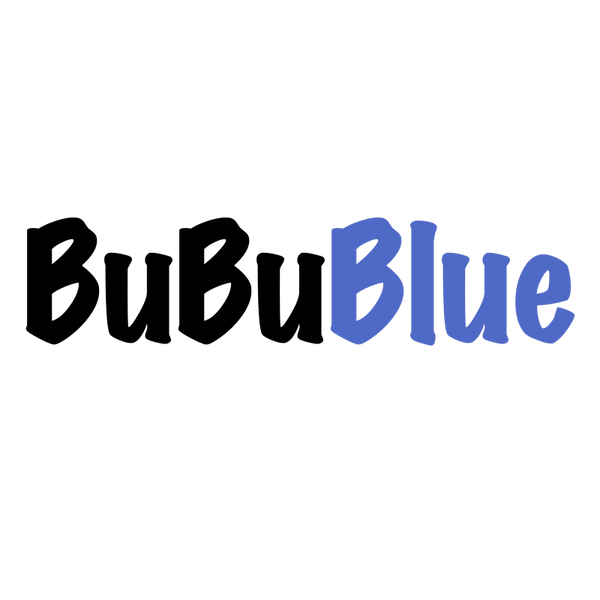Batik - Intangible Cultural Heritage Of The Miao Nationality
Batik is a traditional process of resit-dyeing, that uses wax to draw patterns on fabric using special pens.Then cloth is then dyed indigo. After the dye is set in cold water , the fabric is boiled to remove the wax , revealing the blue and white pattern.
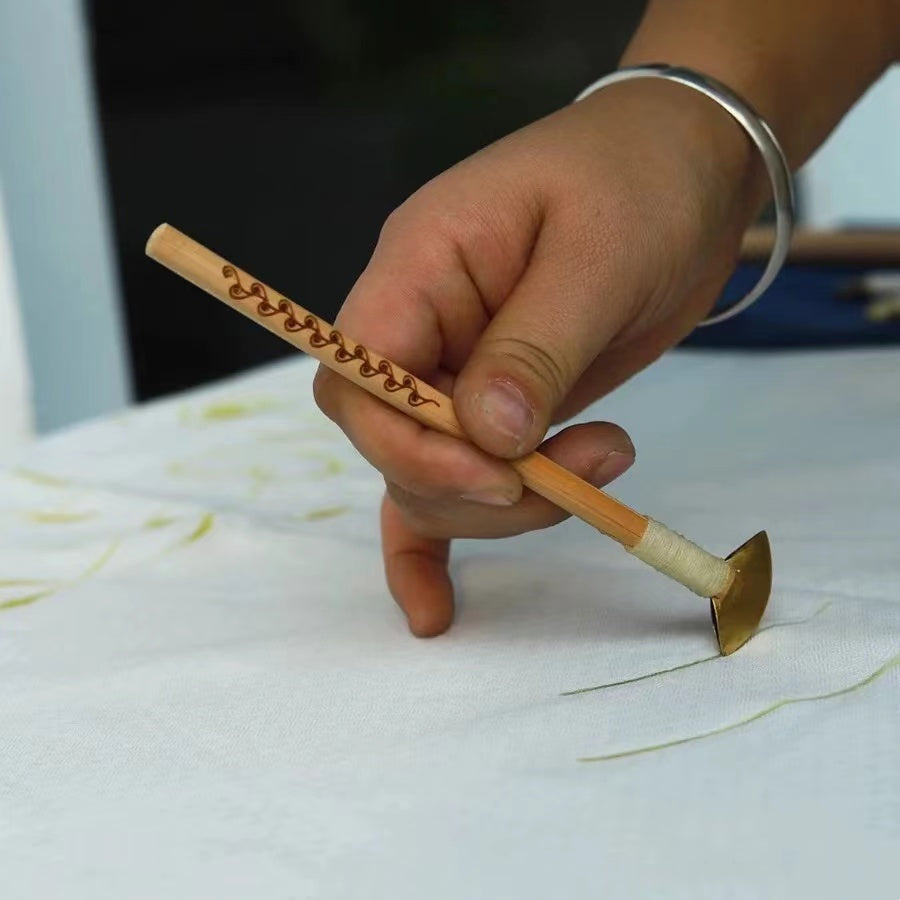
Batik tools:Wax Knife
- A wax knife is a tool for making batik.
- The wax is extracted from the honeycomb of bees and is viscous.
- The wax knife is made of two copper sheets bonded together, and the wax flows out from the gap in the middle to form the lines on the scroll.

Vegetable Dyes:Indigowoad Root
- A non-toxic, harmless, non-polluting plant dye with special fragrance and health care function.
- The dyed products are bright and elegant. Cut fresh isatidis stems and leaves—fermentation—blue dye precipitation—blue paste vegetable dye.
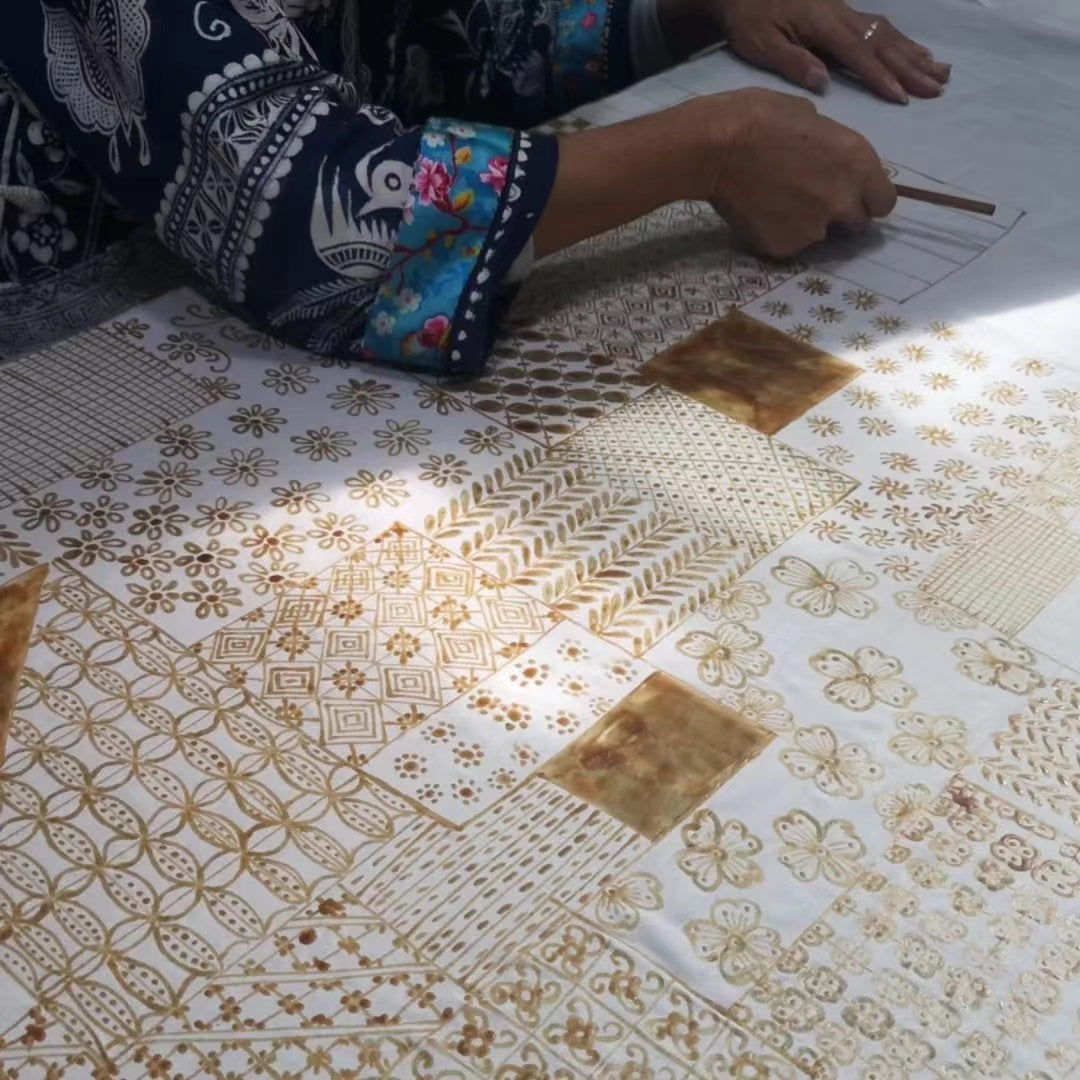
Spot Wax
- On the self-woven white homespun cloth, use a homemade copper knife to spot wax flowers, and then draw various patterns
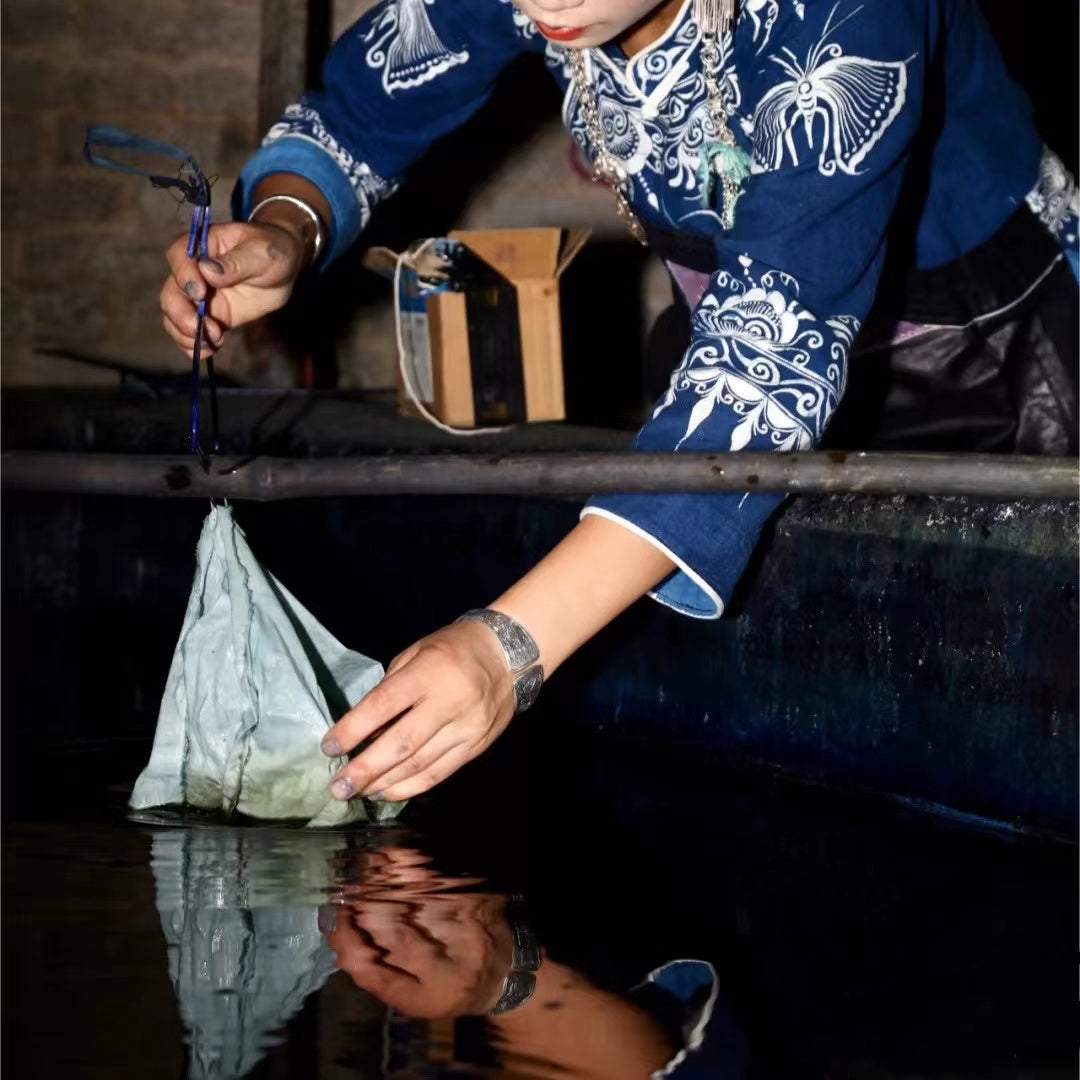
Dyeing
- Put the painted wax pieces in the indigo dyeing vat. Generally, each piece needs to be soaked for five or six days.
- After soaking for the first time, take it out to dry, and it will be light blue. Then soak it several times to get dark blue.
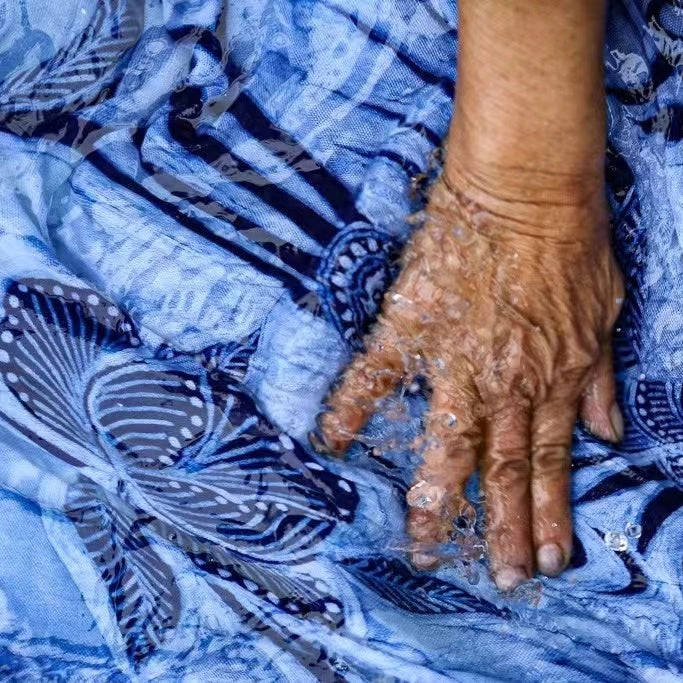
Dewaxing
- After repeated dip-dyeing in the indigo dyeing vat, rinse in cold water, and then boil the beeswax with boiling water to form batik with white flowers on a blue background.

Dried
- After natural drying (non-exposure), the batik pattern with white patterns on the blue background appeared
